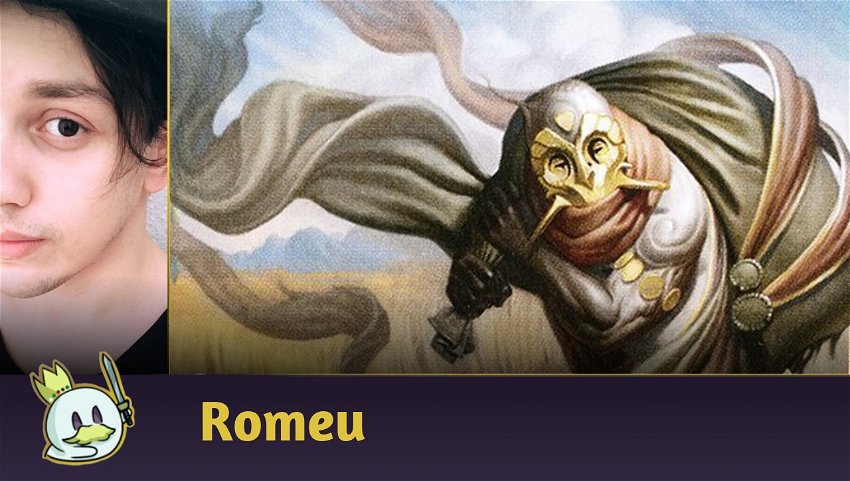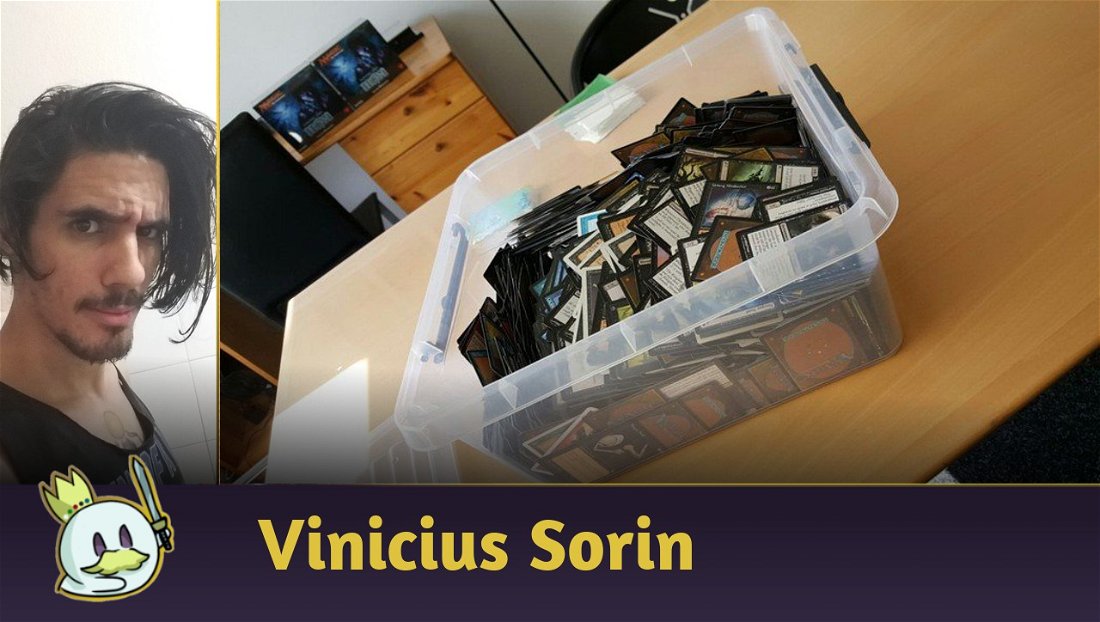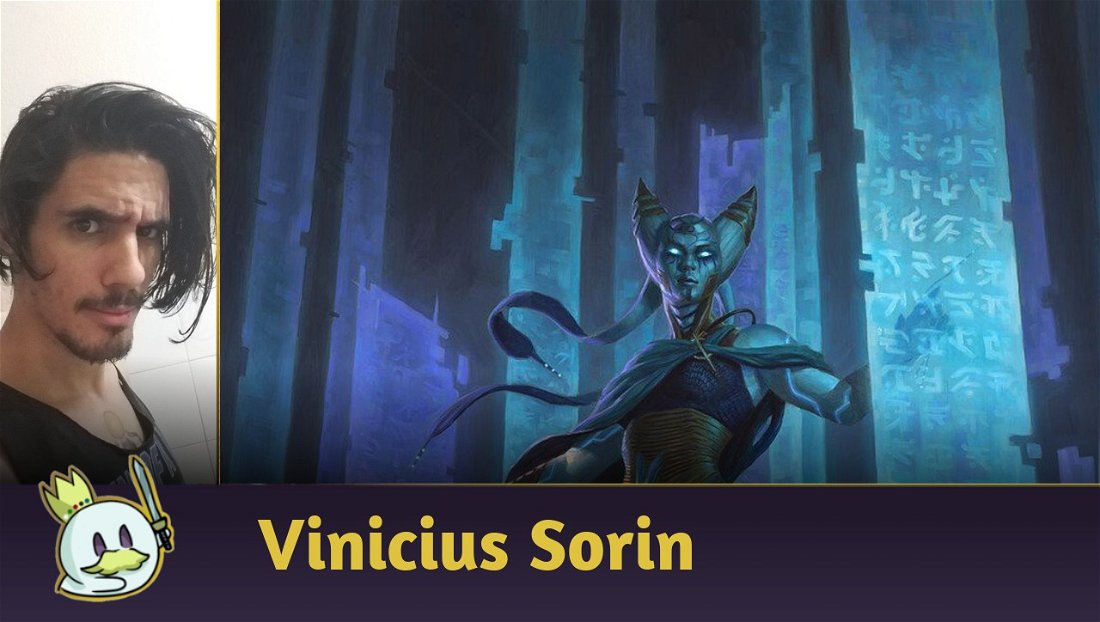I believe that no Pauper deck is as connected to the Pauper community as Mono-Black, mainly because, for many years, it was the best Midrange option or “balanced deck” of the format, which technically managed to have a good winrate against most of the Metagame, and was really popular among local players.
However, over the years (and with the introduction of increasingly powerful mechanics and engines), Midrange's monocolored lists became obsolete and made room for archetypes such as Boros Monarch, Orzhov Pestilence, Jeskai Ephemerate or the recent Rakdos Metalcraft decks, all offering greater versatility with their additional colors, as well as very distinct play styles that are often not as widely mastered and understood as Mono-Black is in both playing with and playing against it.
I'm not so sure about a scenario like Magic Online, but, in the national scene, it's very common that most of the more experienced Pauper players have a wide natural understanding of the sequences that this archetype has, and it's in and outs.
As for players who specialize in it, they also have huge knowledge of how to pilot and what posture to take in the most diverse matches, including some details that are not usually so popular among other players (for example, how it was more important to be on the draw than on the play in a Mirror Match because your reactive position rewarded against any player who piloted it in timely sequences, as you would always have removal for their creatures, and your Monarch would be on the battlefield after the opponent's, moreover, it also reduced the value generated by a Gray Merchant of Asphodel in the first few turns).
But times have changed, and the question that remains for many players these days is whether if it's worth playing Mono-Black on Pauper these days.
Well, for medvedev, it was so worth it to the point where he won the Pauper Super Qualifier with a Mono-Black Devotion!
The Decklist
The game plan of this list is very practical: remove creatures that your opponent plays while your creatures offer a means of obtaining some advantage with extra draws or through recurring removal, as is the case with Cuombajj Witches.
Currently, when you build a Mono-Black list, you need to consider which matchups you want to win and which you are willing to lose, as there is no way to fully focus on every game even when removals are still one of the best universal answers that the format offers.
As for the list above, the focus is clearly on playing well against two categories: archetypes that crowd the board with small creatures (Faeries, Boros Bully, Elves) with Suffocating Fumes and Cuombajj Witches, and those who seek to perform constant 1-for-1 trades and use few, but occasional threats (Monarch, Cascade) with Chainer's Edict and Snuff Out.
Another point of this selection is that, technically, both categories complement each other very well on several occasions, such as Suffocating Fumes removing small creatures so that Chainer's Edict can remove the larger ones, while Defile works well as a cheap and efficient card against many threats in Early-Game, making room for both of the above removals to become more devastating when used at the right time.
Among the strategies that the list seems to abdicate from responding so efficiently are archetypes that can play multiple large creatures in a single turn, such as Affinity or Stompy, in addition to decks that have many ways to recover their resources during the game and extract a lot of value as the game extends, such as Familiars or Jeskai Ephemerate.
In the end, I see this deck as a great Meta Call from a player who expected a high presence of archetypes like Faeries and other Midranges.
Mono-Black Control or Mono-Black Devotion?
I've always found it strange to call this deck Mono Black Control because it's a Midrange that tries to take advantage of Devotion with naturally good cards to sequence with Gray Merchant of Asphodel and deal an expansive amount of damage.
However, the name Control is actually a legacy from other times, before Theros was released, and even in the early days of the format where Mono-Black Control was one of the main decks in the Metagame and one of the first of which players considered predominant to the point of asking for a ban on Crypt Rats, for being "very efficient as a sweeper in a creature-based format".
However, this ban never happened, and the format adapted with the elaboration of strategies that took advantage of the clear weaknesses that Mono Black Control had, leading to the birth of decks such as Goblins, which mitigated the opponent's 1-for-1 trades by making everything left on the board a potential threat with Goblin Sledder, while none of them proved to be uniquely relevant to the point that they couldn't be replaced by two others the next turn.
The years have passed, and the decks have evolved: while Goblins in its most popular version today is essentially a Combo, Mono-Black has adopted a more Midrange-oriented stance, seeking to respond to the opponent's threats, but also opening space to establish its own pressure with creatures that offer useful 2-for-1 effects and stack Card Advantage with Thorn of the Black Rose.
At the end of the day, I prefer to call this list Mono-Black Devotion because that's basically what this archetype is meant to do, and because there's nothing to stop more control-oriented versions from emerging later, and it's beneficial to have terms like differentiating it. But it makes no practical difference to call it Mono-Black Control due to the long history the archetype has in the format.
Maindeck
Although many players are familiar with Mono-Black as a whole, I suppose it is an opportune moment to review the criteria for each of the cards in the archetype, given that it is very common for players to get excited about cards that appear in each new release as a possible option for it.
In addition, I will also be mentioning some occasional choices that may appear in each slot for a better understanding of where they usually fit.

Starting with the main two-drop the archetype has had since adopting the Devotion version, Cuombajj Witches adds two devotion while its 1/3 body is very useful for blocking creatures at any stage of the game. Its ability dealing 1 damage to any target lets you keep the board of small creatures decks like Faeries under control, while removals can be used against more important targets.
Other options in this slot are typically Dusk Legion Zealot, when the format is in a state where creatures with 1 toughness are not that relevant, and we need more resources in Midrange games, in addition to Dauthi Slayer when the format is in a non-interactive state, and where your best option is to speed up the clock.
Another creature not widely used, but that I've played in moments where the format lacks interaction is Wicked Akuba because it's an absurdly powerful mana sink, but it's conditioned to only prevail when the board position is not so relevant, which is a very rare situation in Pauper.

The archetype's main 2-for-1 effects are found in its three-drop slots.
Phyrexian Rager has seen better days as a creature that trades evenly with others, but it's still the best option the archetype has for a creature that can block other creatures well, trading equally with any X/2 in the battlefield while offering a card to your hand,
Chittering Rats is on the list for adding two devotion, while its ability can be significantly devastating against any opponent who kept an awkward hand and requires a specific resource like an additional land drop to proceed with their game.
Also, Chittering Rats is boosted when you are ahead in the game, as an opponent's useless or bad draw can be severely punished with a pseudo-Time Walk as you accumulate more resources and/or increases the clock set on the board.
These creatures are the best in their respective slots, but Metagame changes can lead to occasions where cards like Liliana's Specter become more relevant than Chittering Rats by removing an opponent's resource and adding a flying body, but this is not a recurring occasion.

These cards are an essential part of the list and there are no alternatives to them, especially since they are the last things your opponent wants to see you play when you are ahead in the game.
Thorn of the Black Rose is the centerpiece of Mono-Black's Card Advantage, and the sequencing of removal on turn 2 and 3, or removal on turn 2 and creature on turn 3, followed by becoming the Monarch on turn 4 can establish a significant advantage that the opponent may find serious difficulties in overcoming if they don't play around it.
Gray Merchant of Asphodel is what allows the archetype the most explosive plays, and commonly the first Gray Merchant cast will stabilize the game and recover damage dealt to you, while subsequent copies will leave you further and further ahead in the game.
Also, a 2/4 body can still attack and block well in the current scenario against some creatures, although there are much more efficient creatures for this purpose in other archetypes.
By the way, other cards that tend to occupy the higher-cost slots include Gurmag Angler and Bone Picker as high-power or evasive threats that can be cast for cheap but offer no additional value, as well as Crypt Rats as a threat and sweeper, but that doesn't seem to fit in a list that already runs four copies of Suffocating Fumes.

Sign in Blood is a classic Mono Black staple and one of the best draw effects outside of Blue for many years.
Nowadays, red has Reckless Impulse, black has Deadly Dispute, and so on, but Sign in Blood is still the best option for Mono-Black Devotion to draw more cards for a low mana cost.
Some lists also run Read the Bones when the format becomes more grind oriented, where Scry 2 becomes infinitely more relevant when it comes to drawing better than other Midranges, but this is not the current situation.

Board interaction includes standard cards from any Mono Black list.
Defile has replaced Disfigure as the main one mana removal since its release in Modern Horizons, as it offers the ability to deal with virtually any creature as the game stretches across a list that doesn't have problems increasing the number of Swamps over the course of the game.
Chainer's Edict is a powerful 2-for-1 effect that is very useful not only against decks with protections and Hexproof, but also for dealing with individual creatures in matchups against Midrange and Control.
I believe these are the best cards in their respective categories, but I must make an honorable mention of another Pauper black staple currently, Cast Down, capable of dealing with any creature for just two mana.
However, I'm guessing the plan of this list and what archetypes it intends to deal with made the player exchange Cast Down in favor of more mana-efficient spells.

Which brings us to the Metacall, with the inclusion of four copies of Suffocating Fumes to deal with small creatures, while the "sweeper" also serves as an additional draw in games where its effect isn't as relevant, giving a total of sixteen draw effects over the course of the game, which is critical since one of Mono-Black's main problems is that it tends to draw badly in the long run because it doesn't have good top manipulation effects, and “mitigating” this with more widely useful cards is an option.
Snuff Out is one of the best removals at Pauper currently (and a significant advantage that Mono Black Devotion has is precisely that it dodges Snuff Out), by offering the ability to deal with almost any creature for the low investment of 4 life, making it essential against several important situations in the game, such as maintaining parity against lists that can play multiple creatures in a turn, or that try to protect one of their threats with some effect like a Counterspell or Vines of Vastwood, among other several options that justify its use in a list that will also have no problem casting it for its mana cost in Late-Game.
There are countless cards that can be used as Meta Call, and it's impossible to talk about all of them, but some honorable mentions include Duress in less creature-oriented Metagames, Echoing Decay for dealing with tokens, and Memory Leak as a card that I've particularly used a lot for the mere fact of being a one-mana Cycling with additional effects against Midrange and Control.

In addition to the Swamps, the deck also has the support of four Witch's Cottage to resort to your creatures in Late-Game, helping to invalidate some opponent interactions when the game extends while reusing its 2-for-1 effects, being significantly devastating when it returns a Gray Merchant of Asphodel or a Thorn of the Black Rose.
Finally, Bojuka Bog is a great way to have a graveyard hate in the Maindeck without compromising other slots for this purpose.
Sideboard

With the absence of Tron and no prevalent combos and noncreature decks, Duress loses a lot of its space to Distress for its ability to also deal with creatures, since you can use it to remove a creature with Monarch from your opponent's hand before they cast it, or a Mulldrifter that would be repurposed with Ephemerate, which makes a huge difference in attrition matchups.

The worst matchup for Mono-Black has is definitely against Burn, and it's not usually worth dedicating too many slots to such a bad match, but Unexpected Fangs does an impressive job of being good not only against this archetype, but also in delaying the clock of other aggressive decks or even serving as a combat trick at times, in addition to also combining incredibly well with Cuombajj Witches, causing each activation of it to give you 1 life, instead of (normally) dealing 1 damage to you.

With some archetypes trying to resort to their own graveyard with cards like Ardent Elementalist, Pulse of Murasa, Reaping the Graves and the combination of Kor Skyfisher with Omen of the Dead, the inclusion of a graveyard hate is necessary, and Nihil Spellbomb is relatively better than other options in this regard because it offers you a draw on its activation, in addition to not affecting Witch's Cottage's usefulness, as Relic of Progenitus would.

As for the one-ofs, Reaping the Graves stands out for being as impactful on this list as it would be on any other creature-based deck in games where players commonly trade numerous resources and removals, as well as being devastating in games where both players cast many spells in a single turn, as against Faeries, which commonly try to sequence some cantrips on their own turn, in addition to responding to your plays with Counterspells or removing your threats.
On the other hand, Pestilence is a reasonable option for a recurring sweeper in Late-Game that helps to deal with the most diverse situations against creature decks, while it can also, alongside a high-toughness creature, such as Gray Merchant of Asphodel, serve as another alternate wincondition against combat locks, as it can deal some amount of recurring damage per turn against both players.
I won't delve too deeply into Sideboard options because it's also a situation where there are several alternatives, and it all depends on the Metagame you expect to face in a given event or week, and as Mono-Black Devotion is not an archetype with a high concentration of card selection, it seems unfruitful to try to reduce the number of objective answers in favor of more flexible spells because you won't draw so well that you have the options you want so easily for each situation.
Conclusion
That was my Mono-Black Devotion Deck Tech for the list played by medvedev to win last Friday's Pauper Super Qualifier.
Pauper's Metagame seems to have opened up a lot in the last few weeks, but it's obviously not so open that it doesn't have its already well-established decks and, if we consider the Super Qualifier numbers, the main archetypes in the format today are Faeries, with 23%, Affinity with 12% and Boros Bully with 8%.
With that, what is clear is that this list was a bet on playing well against these decks, while also carrying enough elements to try to play equally well against archetypes that try to balance the format, like other Monarch decks.
I don't believe Mono-Black might become a major competitor at Pauper in the future, as other decks are more efficient in the category it falls into, but the archetype still is and likely will often be a viable option for any player who is committed to understanding both how this archetype works and which lines it has and how to use and adapt its list to get the most out of the loopholes in each Metagame scenario.
We're heading into the third post-ban week, and there's still plenty of room to explore before the Metagame becomes absolutely stabilized again.
Thanks for reading!













— Comments 0
, Reactions 1
Be the first to comment